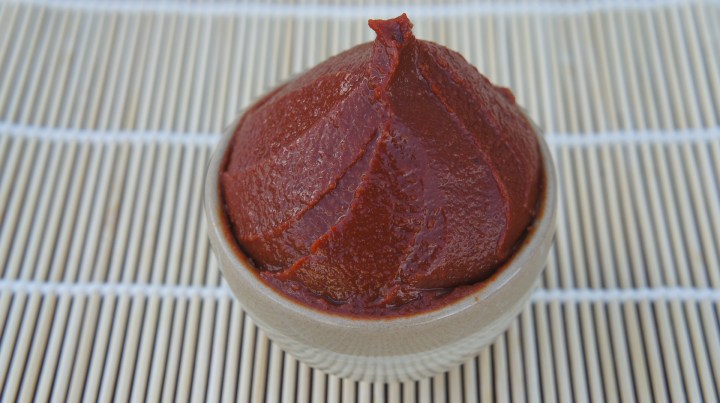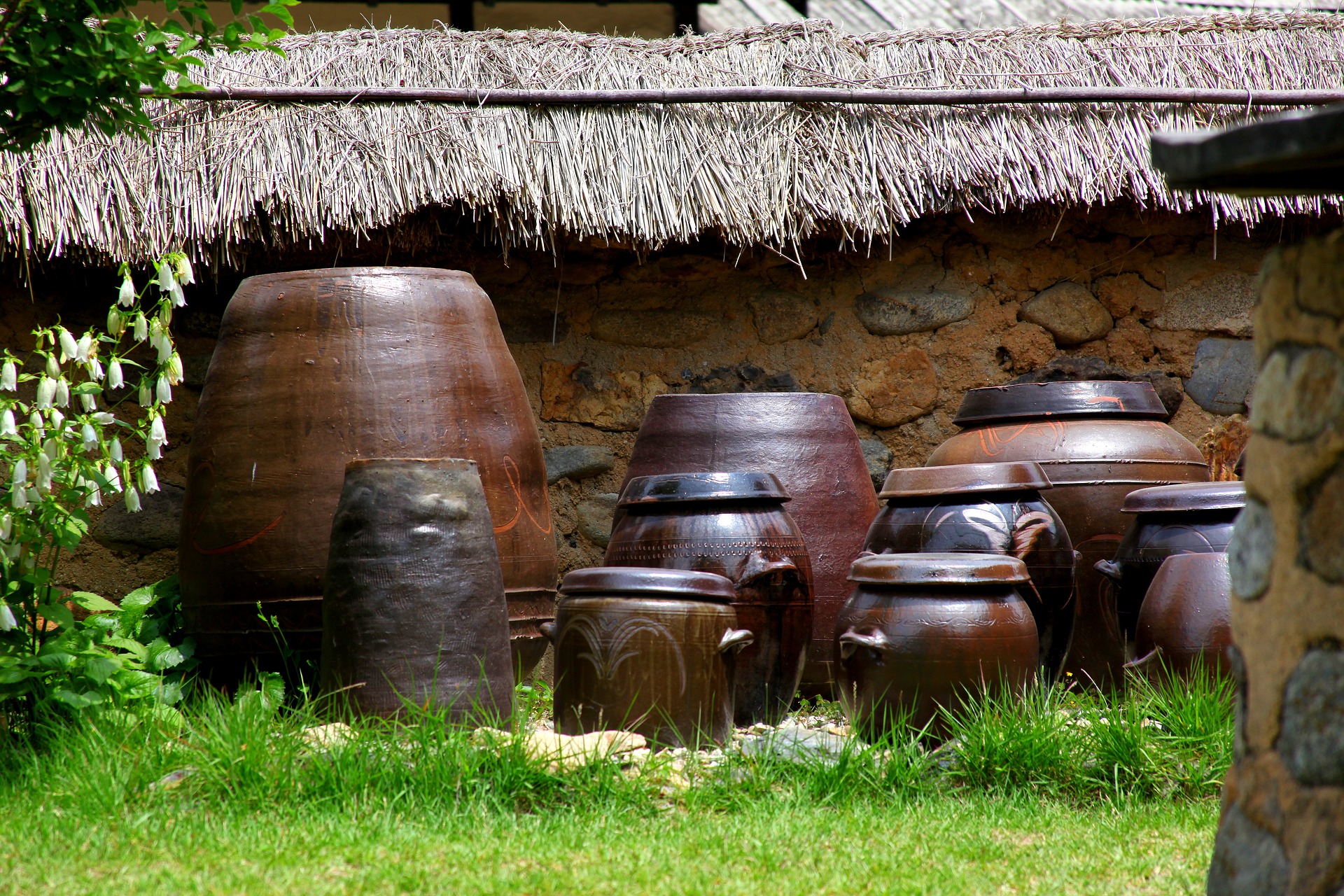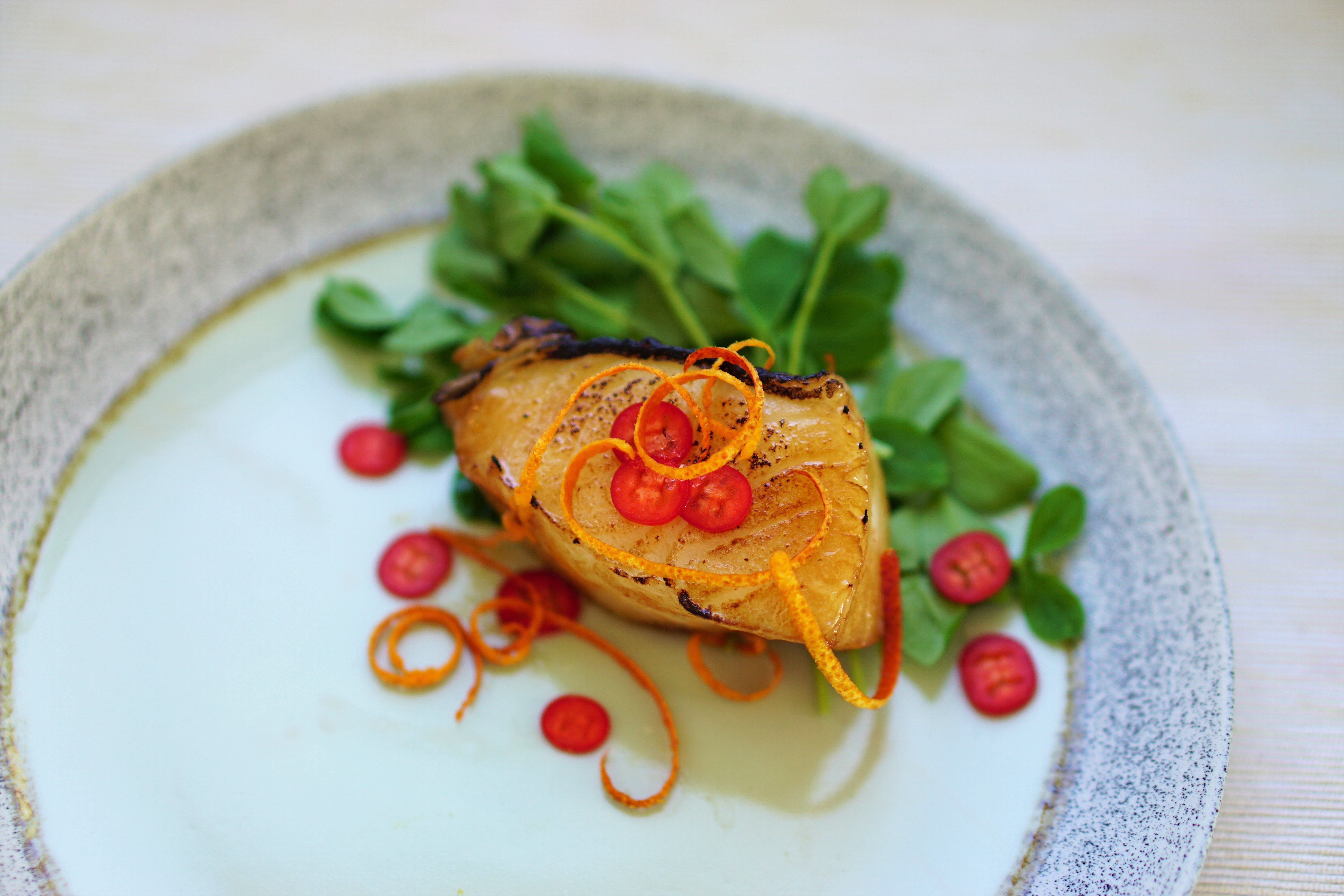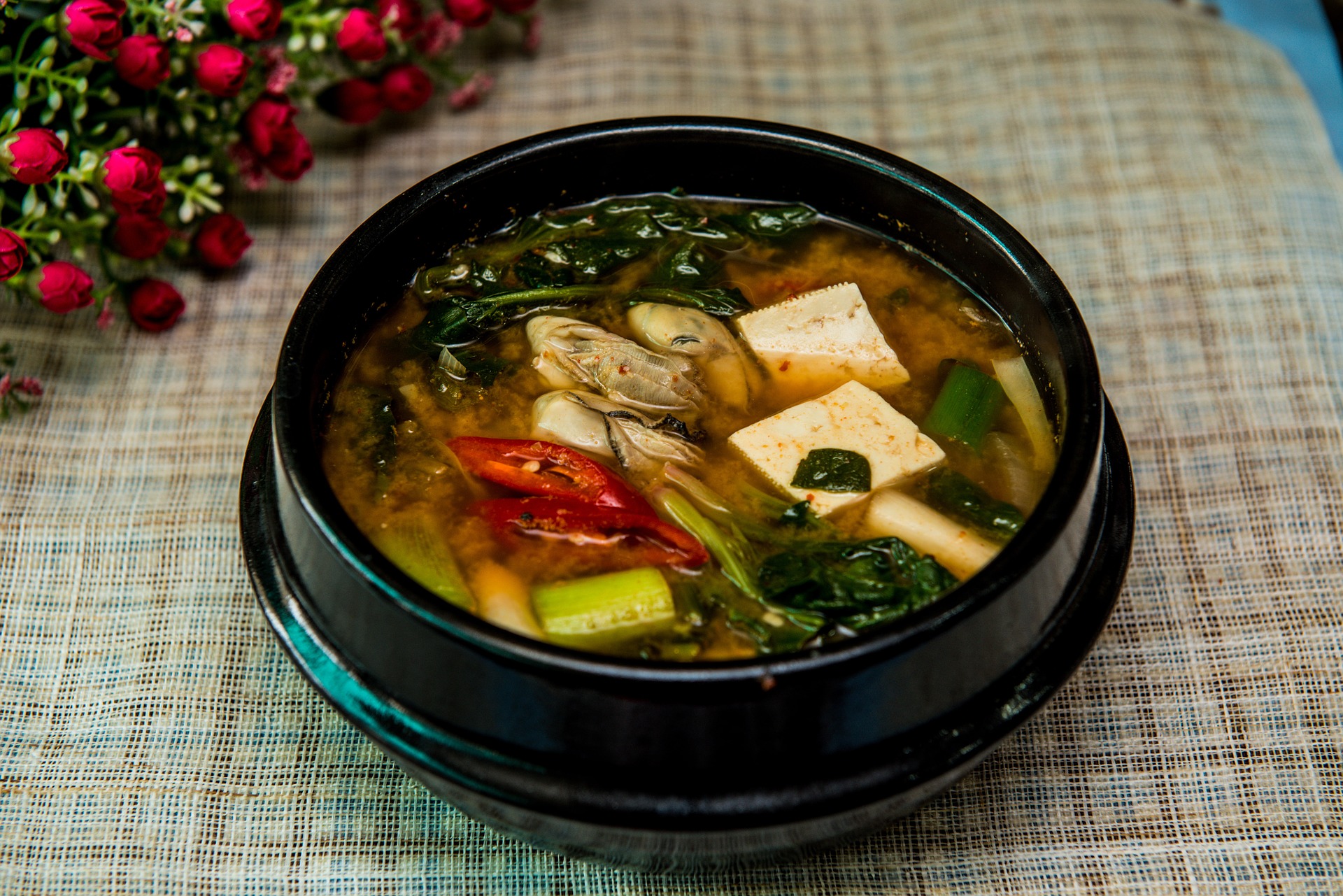MISO MAGIC
The wizardry of Japan’s famed condiment in the lockdown kitchen

Persevering into the second week, we’re already a bit bored with the saminess that’s coming out of the kitchen. But there is a secret ingredient that adds what we’re missing, some taste excitement, depth of flavour, professionalism, and a bit of culinary complexity to even those baked beans on toast.
If anyone produces yet another butternut mush, let them consider a miso paste version before everyone’s eyes roll so mournfully. Again.
My mother was something of a resentful cook when catering for us, and the food she produced was indicative of that, except for her hamburgers on Saturdays and often an interesting sort of Sunday roast. But she loved “having people”. Others, not us. So her culinary advice to me was not as much about cooking as “entertaining”. It went like this:
If it’s too salty, add potatoes. If it’s too thin, add cream. If it’s too thick, add cream. If it has no taste, add garlic. Never apologise if something goes wrong.
It was pretty useful advice from my late teens on, as I learned about food from my TV producer boss, who was also a Cordon Bleu cook, and from my Cape Town boyfriend, who cooked from a dog-eared Claudia Roden paperback and explained to me the scientific reasons for ingredients, for the cooking of them and their sauces behaving in the ways they did.
Then, during a much more recent freelance stint doing recipe and menu development for a good award-winning Joburg restaurant, I discovered the biggest cuisine secret of all, something that many chefs already knew, that miso paste is your go-to ingredient. If only my mother had known.
It makes food more meaningful, more nuanced. It makes a serious difference to even the most banal foods and lifts up great dishes another notch. It’s kitchen magic.
For big, oriental miso hits, Love Me So is a well-known eating-from-bowls place near where I live in Melville, Johannesburg. But, long before lockdown, cooking with small amounts of miso was just clever, having it work with other foods, rather than being the food itself.

Miso barrels. Image by dae jeung kim from Pixabay
And it can be delivered to your door. During lockdown. If you don’t have any at home, Woolies deliver Hikari Japanese miso paste. Health food places like the Wellness Warehouse and Joburg’s Fresh Earth also deliver the Clearspring organic Japanese Japanese miso pastes. Oriental supermarkets and suppliers stock it, of course, but may not be delivering with such readiness at present.
It’s also a health food, just right for now. It’s used for fighting off influenza at the best of times. Now, at the other sort of time, it’s good for its B vitamins and vitamin E that are needed for a strong immune response to viruses. Being one of the goody-goody fermented foods of the moment, its probiotic qualities mean gut-health, which is the basis for whole-health.
Boiling and very high heat destroy these beneficial bacteria, so miso is best slipped in after removing the dish from the heat. In the Butternut Spoons case below, it’s foregone that probiotic part but is still the great taste ingredient and miso has considerable protein value to contribute to meatless dishes.
The first thing to do is try it with some tinned baked beans. Add just a teaspoon or maybe two of miso (not the pale or “white” or “sweet” miso here) to the beans, hot or cold, and mix it in. See how your tongue loves it. And how your family does. A little miso paste goes a long way.
Before Japan was really Japanese, in the fourth century BCE, people were preserving soy beans and, though there are thousands of kinds of miso today, we in the West simply order them by colours, generally. The ingredients vary but the basis is a paste of soy beans, often other starches, yeast and sea salt.
Red (Aka) miso or Dark miso often has some barley in its mix but is the most pungent and the saltiest kind. The flavour has usually been developed in wooden casks for a year or more. It’s useful in dark, dense dishes and great for marinades. If you use it in the baked beans, just add a bit. The saltiness can be a useful accomplice for taking on that rather sweet element of canned baked beans. There’s a reminder of Marmite here but something way more elegant and rounded.
Yellow (Shinsu) miso is really light brown and I find it the easiest to use, good for just about anything. It also usually has some barley in the mix but less salt. It’s used in soups and in wonderful glazes for many meat and fish dishes. In the lockdown pantry is probably some peanut butter that only reaches food status, I reckon, when it has some yellow miso mixed into it.

Marie-Lais Emond’s miso-souped-up butternut dish.
White (Shiro) miso is also not white but pale yellow and is sometimes called Sweet miso because it has more rice with the soy bean and is not fermented very long anyway. It’s useful for turning ersatz lockdown mayo into something edible and for elevating the taste profile of homemade mayonnaise.
This is such magic stuff. Cauliflower cheese? Add miso. Mac n cheese? Add miso. Smashed avo on toast? Smear some miso on to the toast first. Creamy scrambled eggs? Smear the water-and-oven-refreshed old rolls with a bit of miso before dolloping on the eggs. Roasted birds, beasts? Smear with miso first. Aubergines think miso was made for them. Cheaper frozen fish need miso badly. It doesn’t matter what origin the food or the dish, it’s not going to taste Japanese and no one will really know what makes it taste so much better than it ever was. French dishes like leek tarts or onion soup can still be improved by miso. Italian dishes too, like risotto or polenta. By the same token, I think it tastes brilliant in our own pap.
Very French Tasting Fish

Miso is great with fish. Generic photo by Augustine Fou on Unsplash
Even served with tiede lettuce, since it’s likely that most of our lettuces are a little tired already. This does depend on having a bit of wine in the kitchen though. We know you’re unlikely to have a shallot, however, unless you grow your own, so use a quarter of a sweet white onion or a few spring onions instead. Chop them up into one and a half cups of wine, be it red or white, and reduce it all down to just a quarter of a cup. Whisk in 100g of butter until it looks lovely and creamy. Then remove the sauce from the heat, stirring in a tablespoon of the yellow or even a bit of the darker miso. Season, remembering the darker misos are already salty.
Also season the fish (I used hake fillets) and put them in a grill pan or other hot pan, with butter or ghee or oil. Hake just loves butter but you might be low on that commodity. Sear the fish on high heat and even char it a little, all within five minutes. You get more points for getting the skin crispy. Tear up your leftover lettuces or parts thereof and let them wilt even further in hot butter or oil. Season and put them on the serving plates. Plonk the fish on the lettuce mounds. Reheat, but don’t boil the sauce, and pour it over the lot.
Butternut Spoons
These can also be made on a braai. Soften the cloves of half a bulb of garlic by roasting them in the oven or, even more easily, by simmering in a small pan with water to cover for 15 mins. Keep the water for your next pasta dish. Halve two butternuts, lengthways, so that they look like spoons. Now halve the spoons lengthways again so that they look like serving spoons. You’ll have eight. Then peel the softened garlic and mash it up with 2 Tbs yellow or even red miso. Just watch the salt if using the dark one. Add 2 Tbs honey and 1½ Tbs olive oil. Brush or smear the mix all over the butternut lengths and roast them in a 200℃ oven for an hour. Use the leftovers chopped up, for something else.
Desserts using miso are more common than you’d think. Chocolatey things like brownies, cakes, and puddings become deeper and more meaningful. But so does a simple vanilla ice cream. Add miso to desserts when you add the cream or Ideal milk if that’s what you’re down to, or just milk.
Hot Miso Caramel Sauce
This hot miso-caramel sauce is exciting over anything that could be slightly boring on its own. Maybe some elderly banana bread or biscuits that have become chewy. Or that chocolate cake we mentioned. Melt a tablespoon of butter along with a cup of any brown sugar over medium heat and let it caramelise as you mix it. Turn the plate down to low and add half a cup of cream (okay, Ideal milk) and mix so that it’s all smooth and then add 2 Tbs of the light miso and mix through again. This hot and impressive sauce is ready to pour over whatever you fancy now.
When your spouse looks vacantly into the fridge and sighs, that’s when to get out the miso paste container and wave it, like a wand. DM





